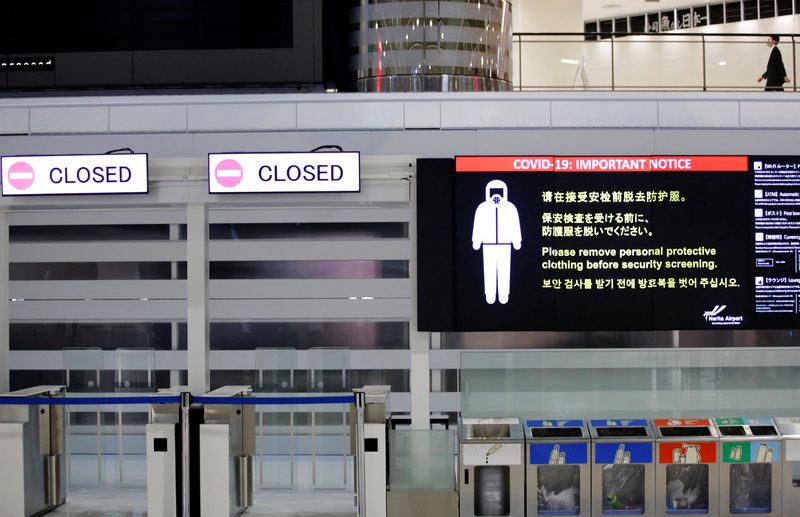TOKYO (Reuters) – Japanese Prime Minister Fumio Kishida’s plan to relax the strictest COVID-19 border controls among wealthy nations has pleased nobody, with businesses and student groups worried it might not be enough while online critics blast his change of tack.
Japan has largely been closed off to non-residents for almost two years, keeping out hundreds of thousands of students and foreign workers sorely needed to fill a labour gap left by the nation’s shrinking, aging population.
Kishida said on Thursday that from March the number of people allowed to enter Japan will increase to 5,000 a day from 3,500 now, while quarantine would be shortened or eliminated entirely.
Opinion polls have shown widespread public support for the travel curbs, and people on social media expressed dismay over the lifting of the restrictions while infection controls remain in place over much of the country.
An Omicron-fueled wave of cases in Japan has shown signs of peaking out, but fatalities have spiked to records this month, particularly among the vulnerable elderly population, amid a slow roll-out of vaccine booster shots.
“This small easing just makes things murky, they say Omicron has peaked but the number of deaths are rising,” a poster named kaz09101 said on Twitter. “Boosters….are not increasing. What the heck can this government actually do?”
“Last year, during the worst period, we had the Olympics,” said another named Inoue. “This year, deaths peak – and they ease border measures. Deja vu?”
MISSING ROADMAP
With the Omicron coronavirus variant now widespread in Japan, business leaders and some politicians have said the border measures no longer made sense.
“Japan’s reputation as a stable and reliable partner is at stake,” said Marcus Schuermann, delegate of the German Chamber of Commerce and Industry in Japan, citing a survey of member companies that reported losses during the border closure.
Kishida’s announcement is a “positive development,” he added, but a roadmap on how people will be allowed into the country is still missing.
The American Chamber of Commerce in Japan echoed the call for transparency.
“We also urge that the government allocate sufficient resources to accelerate application and visa processing and to reduce long delays at ports of entry,” ACCJ special advisor Christopher LaFleur said in a statement.
Filippo Pedretti, the organiser of a group of international students waiting to enter Japan, said they were concerned the 5,000 daily limit could mean many would still miss the start of the new semester in April.
“Thus many will lose another six months of scholarship and will be forced to take online classes,” he said.
A Japanese government official told reporters on Friday there was no estimate on how long it would take to let in all the waiting foreign nationals.
Political analyst Atsuo Ito said Kishida’s change of course shows his flexibility but also an inability to set clear goals.
“Depending on public opinion and experts, his policies just change all the time,” he said.
(reporting by Rocky Swift and Elaine Lies in Tokyo; Editing by Tomasz Janowski)






















